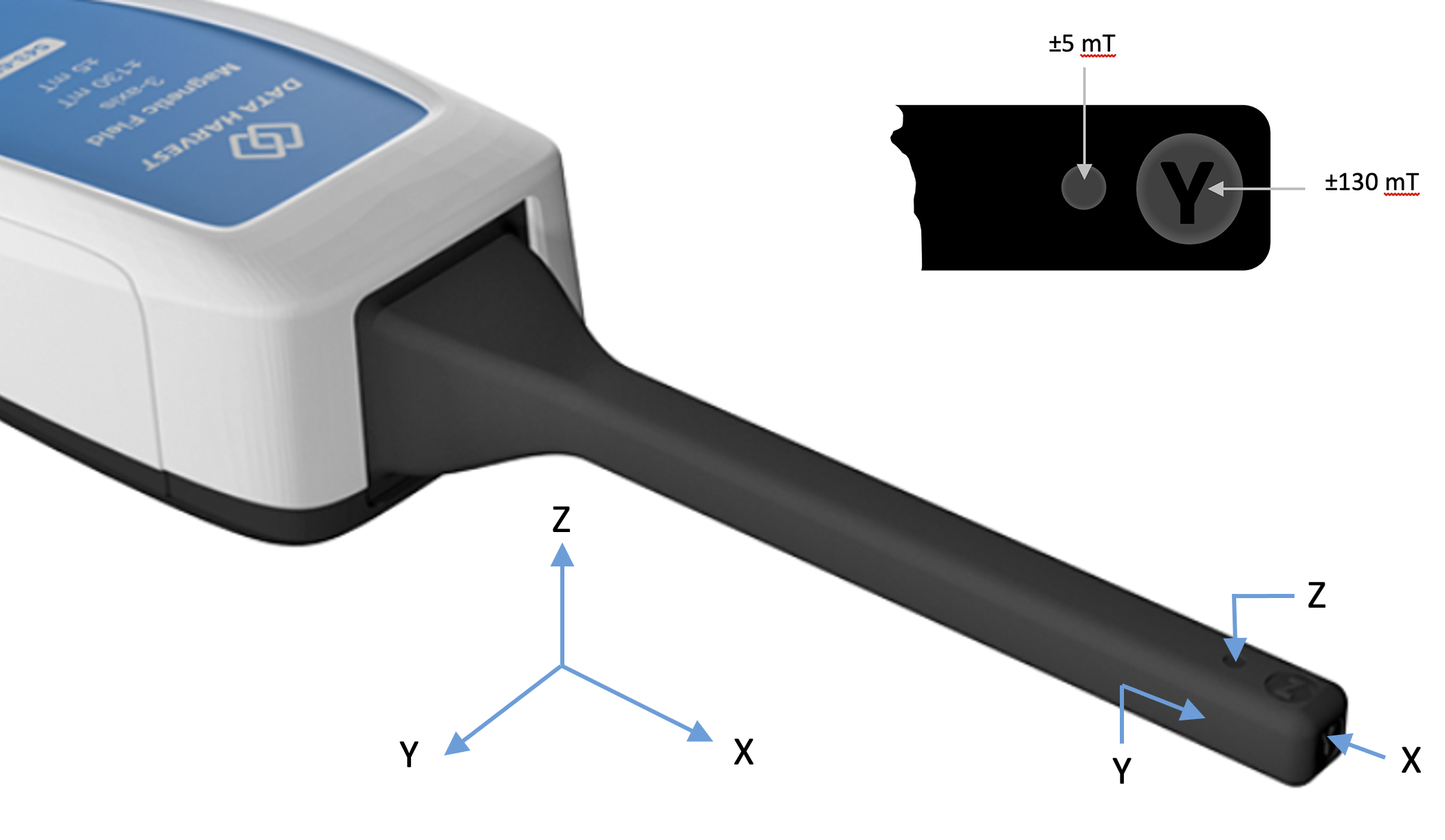Usage Information
- The Magnetic field sensor be used is used to explore the direction of a magnetic field (X, Y and Z), it can also measure the magnitude in two ranges, ±5 mT or ±130 mT.
- The ±5 mT range is suitable for lower magnitude magnetic fields such as the magnetic field of the earth, solenoid investigations and for investigating the field round permanent magnets.
- The ±130 mT range is suitable for investigating the field round strong permanent magnets
Note: Strong magnetic fields can leave a small offset on the ±5 mT range zero position. Use the tare feature in
EasySense to remove this if it is critical to the experiment.
- As the values obtained will be sensitive to the position in the field, and the orientation of the sensor to the field direction, it can be useful to: -
- Fix either or both the source and the sensor in one position.
- Use a non-magnetic ruler or metre rule as a guide to move the sensor.
- Use a non-magnetic clamp and stand to secure the sensor so it is kept facing at the same angle and in the same direction during the investigation.
Note: A false low value could be achieved if the direction of magnetic field is not at 90° to the plane of the sensor i.e. perpendicular to the relevant circle or letter.
- The position of the sensing device with ±5 mT range is directly behind the dot near the end of the sensor’s wand. The ±130 mT range device is positioned directly behind the letter. This needs to be taken into account when positioning the sensor on a measuring device e.g. a ruler.
- The Hall voltage and internal resistance have low temperature coefficients. The effect of temperature can therefore be ignored in the normal school laboratory situation.
- Check how smooth low voltage units are before using them for electromagnetic field experiments. Many DC low voltage supplies are not very smooth and will therefore vary the field with the ripple voltage.
- There should be no ferrous metals or magnetic alloys in the vicinity of magnetic field experiments. Such materials will become magnetised and distort the magnetic field. Benches and equipment should be made from non-magnetic materials e.g. wood, plastic or aluminium. Please note that many clamp stands have aluminium rods and clamps, but their bases are made of iron.
- The safest coils to use for solenoid experiments are commercially wound coils that are marked with a rating.
- If home made coils are used take care to avoid overheating. Do not switch on except when taking measurements. It may be useful to add a contact switch (which is normally open) to the circuit. Insert an ammeter or current sensor in the circuit to monitor the current, to ensure that it is at a safe level. Too high a current may cause damage through overheating, and will probably cause the resistance to rise.
- Fields in excess of ±1,000 mT (1 T) may cause permanent damage.
- The module part of this sensor is not waterproof, it has an operating range of 0 to 95% RH (non-condensing). Do not place the sensor in an environment in which high humidity levels are possible as this may result in damage or malfunction.
- If the sensor has been left in the cold, let it warm to near room temperature before waking it from sleep.
Positioning the Sensor
The sensor uses two 3D Hall sensing devices positioned near the end of the wand that measure magnetic field in the X, Y and Z direction. The ±5 mT device is positioned directly behind the dot mark, the ±130 mT device is located directly behind the letter.

